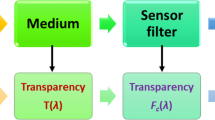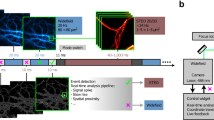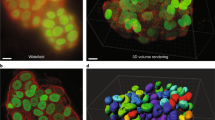Abstract
THE wave-length of the beam of an electron microscope, compared with visible light, is the property akin to colour. The beam is ‘monochromatic’ and it is standard practice to maintain it so within very narrow limits. The wave-length for electrons, in terms of their velocity expressed in electron volts, is given by the equation λ = √(150/V) Angstrom units, where λ is the wave-length and V is the voltage accelerating the electrons. The ‘colour’ (wave-length) of the electron beam is varied by varying the voltage accelerating the electrons.
This is a preview of subscription content, access via your institution
Access options
Subscribe to this journal
Receive 51 print issues and online access
$199.00 per year
only $3.90 per issue
Buy this article
- Purchase on Springer Link
- Instant access to full article PDF
Prices may be subject to local taxes which are calculated during checkout
Similar content being viewed by others
References
Donovan, G. E., Lancet, i, 832 (1951).
Donovan, G. E., and Jones, G., Proc. Roy. Soc. Med., 44, 816 (1951).
Author information
Authors and Affiliations
Rights and permissions
About this article
Cite this article
DONOVAN, G., STAFFORD, E. Colour in Electron Microscopy. Nature 170, 1126–1127 (1952). https://doi.org/10.1038/1701126b0
Issue Date:
DOI: https://doi.org/10.1038/1701126b0
Comments
By submitting a comment you agree to abide by our Terms and Community Guidelines. If you find something abusive or that does not comply with our terms or guidelines please flag it as inappropriate.



